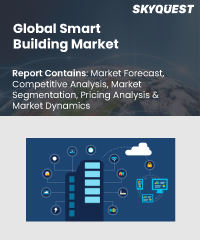
Product ID: SQMIG45H2056

Report ID:
SQMIG45H2056 |
Region:
Global |
Published Date: February, 2024
Pages:
157
|
Tables:
142 |
Figures:
77
Smart Building Market Drivers
Consumer interests and vendor investments for technology to encourage the market growth
Smart Building Market Restraints
Increase in number of cyberattacks and security leaks to impede the adoption
Our industry expert will work with you to provide you with customized data in a short amount of time.
REQUEST FREE CUSTOMIZATIONSmart Building Market size was valued at USD 82.77 billion in 2019 and is poised to grow from USD 103.91 billion in 2023 to USD 538.45 billion by 2031, growing at a CAGR of 25.3% in the forecast period (2024-2031).
Want to customize this report? This report can be personalized according to your needs. Our analysts and industry experts will work directly with you to understand your requirements and provide you with customized data in a short amount of time. We offer $1000 worth of FREE customization at the time of purchase.

Product ID: SQMIG45H2056